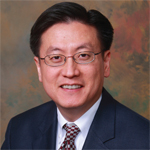
The Good Brigade / OFFSET BY shutterstocK
CHICAGO—At the 2018 ACR/ARHP Annual Meeting, rheumatologist project volunteers for the ACR’s Collaborative Initiatives talked about their efforts to educate primary-care providers, patients and families in their communities about systemic lupus erythematosus (SLE). Their goal is to facilitate timely diagnosis and treatment of lupus, especially in underserved communities.
Health Disparities
Health disparities, or differences in health closely linked to social or economic disadvantages, are a problem in rheumatology care today, said Irene Blanco, MD, MS, associate dean, Office of Diversity Enhancement; associate professor of medicine, Albert Einstein College of Medicine; and a rheumatologist at Montefiore Hospital, the Bronx, N.Y.
“Health disparities tend to negatively affect groups that have systematically experienced greater social or economic obstacles to health,” she said, quoting Healthy People 2020, a public health initiative from the U.S. Office of Disease Prevention and Health Promotion.1 These obstacles stem from discrimination due to race, socioeconomic status, religion, mental health issues, gender, geographic location, sexual orientation or physical disability.
“I am a physician of color. I’m Hispanic. I definitely did not grow up as a person of means. So this definition of health disparities has affected my life intimately,” said Dr. Blanco. “I went into rheumatology to address these issues, given that our populations of color are disproportionately affected by health disparities.”
Health disparities are linked to social determinants of health, which have an impact on adequate access to healthcare, including education level and access to healthy food or healthcare services, said Dr. Blanco. Health disparities include both fixed and modifiable factors.
“Some people would argue that a fixed factor, such as socioeconomic status, may be modifiable, like the idea of someone pulling themselves up by their bootstraps. But if you’re born without boots, you can’t really pull up your bootstraps. My focus is on modifiable risk factors, and things I can do on the micro level to address health disparities. I focus on psychosocial behaviors, social relationships and, particularly, education,” she said.
Volunteer Education Efforts
In 2010, Dr. Blanco had been a faculty member at Albert Einstein College of Medicine for just six days when she received an email from the ACR about volunteer projects to help eliminate health disparities for people with lupus.
“The projects were focused on provider and patient education, [which] was right in my wheelhouse. [The projects] included world-famous rheumatologists, and [the ACR was] looking for people to get involved particularly to disseminate patient and medical school material. [The group] really wanted to reach medical students and build cases that were representative of lupus patients’ experiences,” she said.
Dr. Blanco had just completed a master’s degree program and was waiting for her K award to come through, planning to become a translational investigator in lupus nephritis. She wanted to be more involved in patient and provider education, “given that health literacy and access to care are so important for patients.” She was already working with medical students and giving lupus awareness talks to community groups around New York City. So Dr. Blanco began volunteering with COIN’s Lupus Initiative.
Dr. Blanco has helped develop online CME content on lupus nephritis health disparities and a Spanish-language patient education program, El Lupus y El Corazon (Lupus and the Heart), and is working on the Lupus Self-Management Working Group, a project to cull existing online lupus content to create a self-management system for patients with lupus.
She was also involved in a nationwide effort called LEAP, the Lupus Education Advancement Project. She and her colleagues trained rheumatology fellows at Montefiore Medical Center to teach a continuing medical education course for primary-care providers to identify potential SLE patients early and refer them to rheumatologists. A study published in 2016 showed primary and emergency care providers may receive only 45 minutes of lupus education during medical school. LEAP was designed to help fill their knowledge gaps about the disease. When researchers analyzed 427 post-course assessments from participants, they found that over 85% said the activity improved their medical or practice knowledge, and they would make changes to benefit patient care.2
Dr. Blanco has volunteered with another lupus-related project, the Community Health Worker Lupus Clinical Trials Training Program (LuCTT), which aims to increase minority patient participation in clinical trials by engaging community health workers to improve health literacy, explain how clinical trials work and address issues of mistrust in the medical system.
“We posited that if patients were properly informed with positive and accurate materials, they are going to want to participate in clinical trials. It’s important that we get a critical mass of black patients into clinical trials, because we need to know how these populations are doing and whether these new medicines that we are developing are actually going to work in these patient populations,” she said.
Medical School Training Gaps
Dr. Blanco stressed that a paucity of rheumatology education at the medical school level has a negative effect on early SLE diagnosis and referral. Medical school training on how to examine, diagnose and treat patients with such diseases as SLE or rheumatoid arthritis is widely considered inadequate.3
“Medical students do not have a course specifically in rheumatology. So our diseases are integrated into other courses, such as nephrologists talking about lupus nephritis. Upon graduation, medical students may know little about rheumatic diseases and less about connective tissue diseases,” she said. “The onus is on us to leverage ACR material and resources to address this with medical school deans. How can you have one lecture on lupus and never hear about it again until you see a patient in your practice? We have to improve rheumatology education and amplify our rheumatology workforce.”
According to the ACR/ARHP 2015 Workforce Study of Rheumatology Specialists in the United States, the need for healthcare providers to diagnose and manage patients with rheumatic disease will rise sharply over the next 15 years: By 2030, the report estimates 67 million U.S. adults will have doctor-diagnosed arthritis, compared with 52.5 million U.S. adults in 2012. Not all those patients can be managed by rheumatologists, according to the study, which estimates an excess demand of 138% over the projected supply of rheumatologists in 2030.4
Impact of Delayed Diagnosis
Delayed diagnosis can lead to severe outcomes for lupus patients, as Amanda M. Sammut, MD, learned after she became the first full-time rheumatologist on staff at Manhattan’s Harlem Hospital in 2012.
“Harlem Hospital is a public city hospital. We take care of patients who are uninsured, patients who come from different countries and those on Medicaid. The majority of our patients are African-American, African and Hispanic,” said Dr. Sammut, now chief of rheumatology at New York City Health and Hospitals in Harlem and assistant professor of medicine, Columbia University College of Physicians and Surgeons. “I found the people working there didn’t have much rheumatology experience.”
Early in her first year at the hospital, Dr. Sammut treated a 46-year-old, African-American man who had been admitted with severe kidney failure, a creatinine level of 13 and high potassium.
“He needed dialysis right away. His workup included a kidney biopsy that showed he had Class VI lupus nephritis, [in which] lupus has already attacked the kidneys, and they are scarred. There is not much we can do at that point to treat it,” she said. “I found out that in the preceding year, he had had two emergency room visits in other hospitals. In one visit, he had fatigue and a rash on his arms. At that point, he went home with a corticosteroid cream and was told to see a primary care doctor for follow-up. Then, several months later, he presented to another hospital’s emergency room with a rash. This time, they did bloodwork. His kidney function was found to be abnormal, and he had a creatinine of 3. Again, he was sent home with a steroid cream. He was told that he needed to see someone, because his kidney function was abnormal. But he didn’t follow up, because he was scared of losing his job.” The man also had a son with lupus, but these signs were not put together, she said.
She was saddened by her patient’s case. “He is a young man, 46, and he’s scared, and his kidneys are scarred. If this [were] caught earlier, he could have been treated,” said Dr. Sammut. “At this point, I wanted to find out what people know about lupus, and to get involved in educating healthcare providers, and also community members, about lupus.”
She started giving lectures to medical students, primary-care physicians, obstetrician-gynecologists, nurse practitioners and nurses at Harlem Hospital about SLE, and coordinated her efforts with the Lupus Initiative and COIN, which provided slide presentations to accompany clinical talks.
“I didn’t want us to be a hospital that misses those lupus patients early on. Unfortunately, in my first 18 months, I didn’t see that just once. I saw multiple cases where a lupus diagnosis took a really long time, and patients didn’t have the follow-up,” she said. “The people at Harlem Hospital admitted to me that because they had trained without a rheumatologist, they didn’t have much experience in rheumatology in general. They were also asking me to give them lectures on other rheumatology topics.”
Dr. Sammut began speaking about SLE to anyone who would listen, including setting up tables at the Harlem Health Fair and giving talks at local churches using brochures from the SLE Lupus Foundation (now the Lupus Research Alliance).
“People would pick up information on lupus and say, ‘I know someone who has lupus.’ They often shared very sad stories. They would say they knew someone who had had lupus and died. They were young. It was very depressing for me. I heard other stories of people in the community who didn’t want to go to the doctor because they were scared, so they stayed at home. I’d give them information and even tell them how to make appointments,” said Dr. Sammut.
“I found that it was easy to give talks, because the people in the audiences didn’t know much about lupus. I thought, ‘Why can’t fellows do this? If I just graduated and feel confident about it, why can’t they? The materials are already there.’” She recruited rheumatology fellows from programs in New York City to give talks, and together, they held 31 lupus seminars educating 664 healthcare providers.
Giving lupus-related talks is both fulfilling and confidence boosting, said Dr. Sammut.
“You don’t have to be a top researcher or prominent rheumatologist to do this work. I felt I was able to make a big difference,” she said.
Through her ACR volunteer work, “I met a network of senior rheumatologists. It opened the door for me to other opportunities to work on other ACR projects, including writing questions for CARE [an ACR CME course] modules, writing a textbook chapter on rheumatology and writing an educational module on lupus. These volunteer projects improve patient care, as well. I don’t see patients with lupus being missed anymore at my hospital. It’s great for both students and residents.”
Susan Bernstein is a freelance medical journalist based in Atlanta.
References
- U.S. Department of Health and Human Services. The Secretary’s Advisory Committee on National Health Promotion and Disease Prevention Objectives for 2020. Phase I report: Recommendations for the framework and format of Healthy People 2020.
- Gross D, Caron A, Blanco I, et al. Lupus Education Advancement Project (LEAP): Rheumatology fellows serving as educators increased knowledge and efficiency in lupus recognition and referral by providers in primary and emergency care. Arthritis Rheumatol. 2016;68(suppl 10).
- Monrad SU, Zeller JL, Craig CL, Diponio LA. Musculoskeletal education in U.S. medical schools: Lessons from the past and suggestions for the future. Curr Rev Musculoskelet Med. 2011 Sep;4(3):91–98.
- Battafarano DF, Ditmyer M, Bolster MB, et al. 2015 American College of Rheumatology Workforce Study: Supply and demand projections of adult rheumatology workforce, 2015–2030. Arthritis Care Res (Hoboken). 2018 Apr;70(4):617–626.



